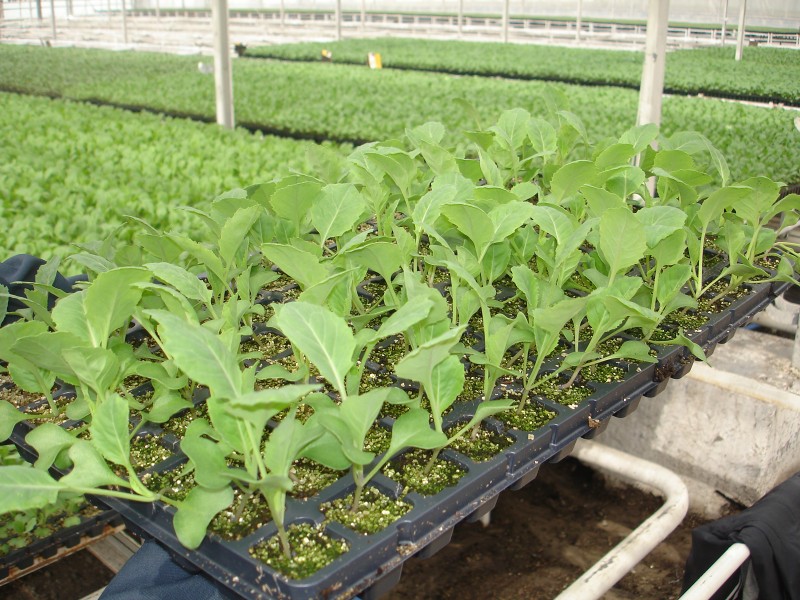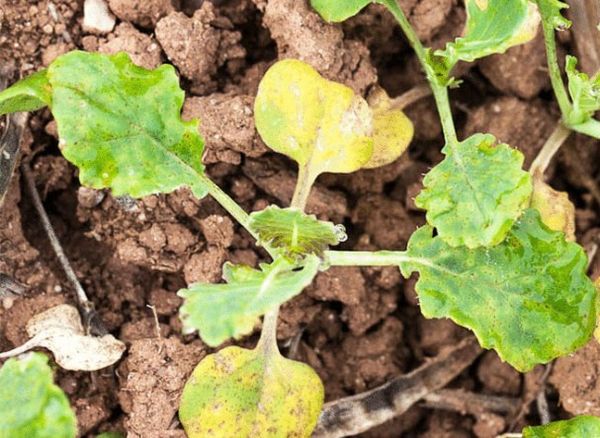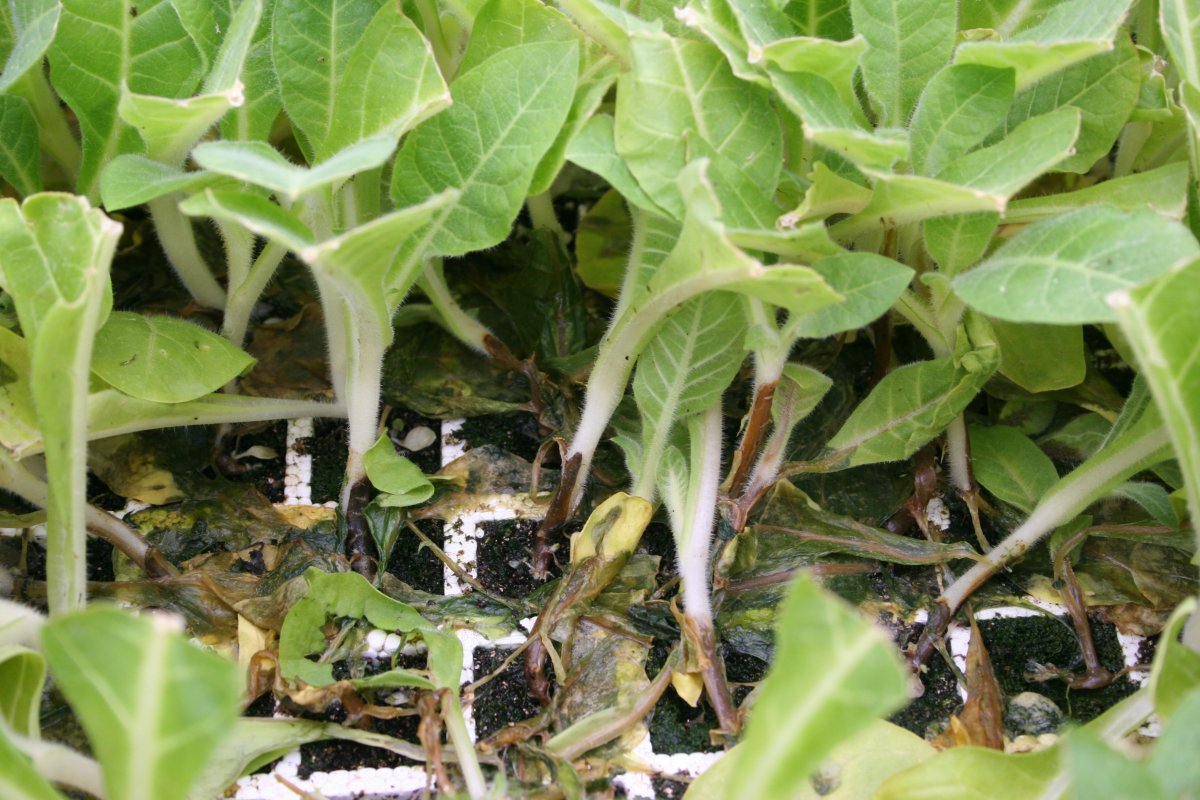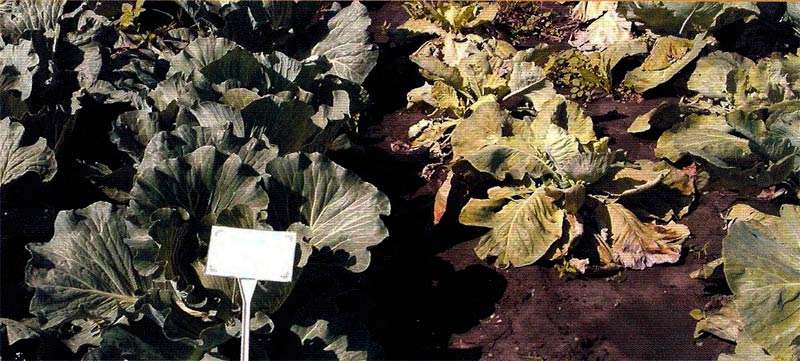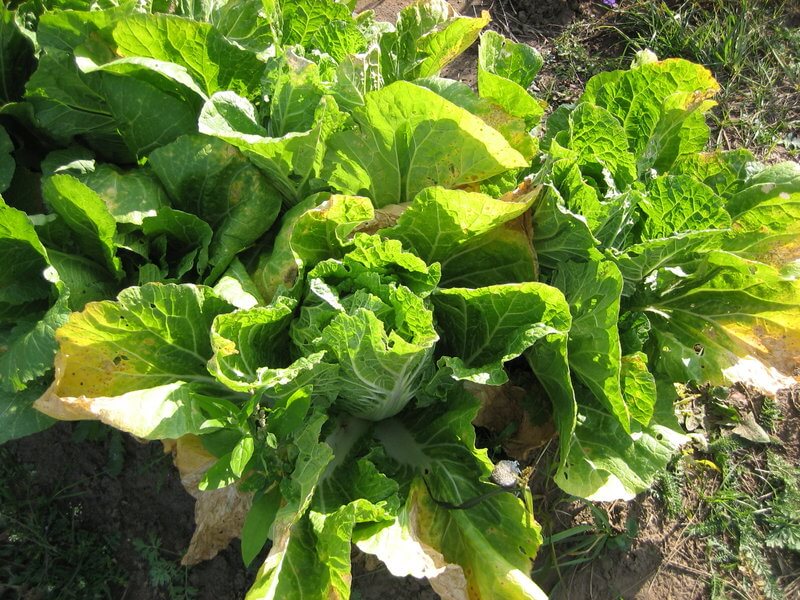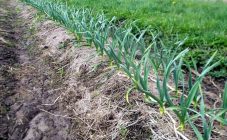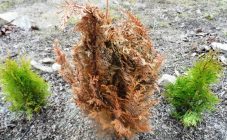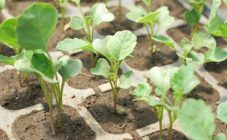Content:
- Rules for caring for cabbage seedlings
- Causes of yellowing and drying of cabbage seedlings
- Unsuitable conditions
- Poor care
- Phyto-diseases and pests
- A fungal disease often affects cabbage seedlings. When infected, seedlings die at the stage of cotyledon leaves. Adults can be saved if sprinkled with soil above the affected point. However, vegetables will lag behind in growth and development.
- The disease is provoked by:
- · Thickened crops;
- · Waterlogged land;
- · Cold water during irrigation;
- When seedlings are damaged, diseased plants are eliminated. Steaming the soil mixture, disinfection of the soil with potassium permanganate is appropriate. For the prevention and treatment of fungal ailments, biological products are used:
- · Gamair;
- Pests
- Insecticides will help out in the battle with the cruciferous flea and aphids. Intavir has a wide range of effects, effectively destroys 50 species of harmful insects.
- Prevention measures
- When not to worry
Often, gardeners are faced with the problem of yellow leaves on cabbage seedlings. Plants with yellowness indicate improper care of seedlings or disease. It is important for summer residents to figure out why the leaves of cabbage seedlings turn yellow, and what to do in this situation.
Rules for caring for cabbage seedlings
To obtain a generous harvest of cabbage in an unprotected area, it is important to comply with the requirements:
- Humidity. When planting vegetable seedlings in open beds, preference is given to the lowland.
- Lighting. The plant likes sunlight. A sun-lit area is selected for landing. The lack of illumination threatens the lack of formed forks.
- Pests. A vegetable is loved by both humans and parasites. To get a harvest, you will have to actively fight pests.
- Crop rotation. It is more correct to plant cabbage on the previous beds after 3 years. Best predecessors: cucumbers, legumes, onions and carrots, green manure and potatoes. Do not plant cabbage after beets and cruciferous relatives: radish, turnip, mustard, radish, turnip.
- Grade. The region of cabbage cultivation, the ripening period are taken into account. Early-ripening varieties are characterized by low yield, head weight up to 1500 g, poor keeping quality. Mid-season species are pickled and salted, stored for a long time.
- Sowing seedlings. Late varieties are sown until mid-April, medium ones - from March 20 to the end of April, early ones - the last days of February or the first decade of March.
- Tara. They are planted in boxes in rows with a step of 4 cm, seeding depth - 1 cm. In individual cassettes - 2 seeds each, then weakened seedlings are removed. Covering with plastic wrap creates a greenhouse effect.
- Top dressing. In the 2-leaf stage with liquid mullein or chicken droppings. Or prepare a solution of 10 liters of water, where ammonium nitrate (20 g), superphosphate (25 g), potassium chloride (5-10 g) are mixed. The next feed is carried out after 10 days. After 3 weeks, if necessary, the cabbage is fertilized again.
- Hardening. Carried out 2 weeks before planting in a permanent place.
- Landing in open ground. The early seedlings are 45-55 days old. For medium and late varieties - 35-45 days. Cultures are planted with developed roots, a strong stem, and monophonic leaves. The planting height ranges from 18 to 25 cm.
Causes of yellowing and drying of cabbage seedlings
When cabbage seedlings turn yellow and dry out, what should gardeners do? It is important to understand the reasons in order to take adequate measures.
Unsuitable conditions
Unsuitable conditions are attributed to the factors why the leaves of cabbage seedlings dry and wither.
Cultivation of cabbage seedlings is carried out in greenhouses, as well as on a window at home. They adhere to specific rules, regardless of the place where the seed is grown.
Yellowish foliage on seedlings appears due to:
- insufficient lighting;
- incorrectly selected soil;
- excess or shortage of nutrients in the ground;
- inappropriate indoor temperature at home.
Poor care
In order to grow normally, develop and not fall, seedlings need proper care. Often the summer resident is to blame for the yellowing of the vegetable. The leaves of young crops can dry out if:
- deficiency or excess of water in the ground;
- oxygen starvation of the roots;
- illiterate feeding with fertilizers.
An excess of moisture in the soil causes acidification. In addition, the root system does not receive oxygen in the required volume. Cabbage sprouts wilt and die. Lack of watering causes dry leaves.
When growing cabbage seedlings from seeds in a nutritious balanced soil, no additional feeding is required. Excess fertilization has a detrimental effect on the shoots - the leaves turn yellow and wither.
Phyto-diseases and pests
The primary reasons why the leaves of seedlings turn yellow and curl are diseases. Among the common ailments are:
- black rot;
- black leg;
- fusarium;
- keel.
If cabbage seedlings suffer from these phyto-diseases, they must be treated immediately to prevent death.
Black rot
The disease is easy to identify. Another name for the disease is vascular bacteriosis. The transmission of pathogens occurs through:
- land and organic matter;
- water and harmful insects.
The disease manifests itself if:
- the cabbage leaves turned yellow from below;
- black spots gradually appear on the leaves;
- the plant turns black inside (from the stump).
The development of the disease is caused by:
- Unfavorable weather conditions. Cabbage plantings are massively affected by black rot if the outside temperature is above zero and there are prolonged rains. Vascular bacteriosis develops rapidly at a temperature of + 26 ... + 30 ° C.
- Temperature drops also give rise to black rot, but the symptoms do not appear super-rapid - only when the temperature rises.
- Poor quality planting material. Sometimes it is fraught with a threat - infection of seeds with rot. When a bacterial disease is affected, vegetables are removed from the soil, burned away from the garden.
- Pests. They are considered carriers of spores of vascular bacteriosis. Therefore, timely disposal of harmful insects on cabbage is appreciated. It is useful to engage in the prevention of infection with parasites or bacterial, viral pathologies.
Blackleg
A fungal disease often affects cabbage seedlings. When infected, seedlings die at the stage of cotyledon leaves. Adults can be saved if sprinkled with soil above the affected point. However, vegetables will lag behind in growth and development.
The disease is provoked by:
· Thickened crops;
· Waterlogged land;
· Cold water during irrigation;
- sharp temperature jumps;
- poor aeration;
- acidic and heavy soil;
- insufficient lighting;
- excessive feed with nitrogen, biological fungicides Radiance, Baikal EM-1.
Fusarium
A fungal infection is also called yellow cabbage. The spores of the fungus enter the seedlings through the roots or injured areas, spread through the vessels of the culture, and impede the movement of water. As a result, the seedlings lose their elasticity, the diseased foliage dries up and falls off. Cabbage leaves have a green-yellow color, which is expressed more in the green part. Sometimes the tip of the fork withers, and later rot. The head of the cabbage loses its foliage and bends.
When seedlings are damaged, diseased plants are eliminated. Steaming the soil mixture, disinfection of the soil with potassium permanganate is appropriate. For the prevention and treatment of fungal ailments, biological products are used:
· Gamair;
- Glyocladin;
- Alirin;
- Trichocin.
Keela
Early and cauliflower are susceptible to keel. Symptoms of the disease are manifested by swellings and outgrowths, growths instead of roots.
Keela gets to the site with animal manure, is brought in with seed. Cultivation of plants on acidic soil contributes to the development of the disease.
Disease therapy involves:
- change of crop rotation;
- tracking soil acidity;
- selection of a variety resistant to keel;
- tillage with Bordeaux mixture;
- fight against weeds (rape, sverbig, shepherd's bag, watercress - carriers of parasitic fungi).
Pests
Cabbage seedlings will definitely turn yellow when harmful insects appear. Underground parasites harm cabbage:
- winter scoop;
- May Khrushch;
- cabbage fly.
Pests destroy the roots of seedlings, so the foliage of the plants turns yellow and dries up, after a certain period of time the plants will die. Vegetable seedlings disappear if they are chosen by aphids and cruciferous fleas. White cabbage, which feed on cabbage leaves, is no less harmful. So that the plants do not fall, but please with a healthy appearance, they resist parasites in time.
Insecticides will help out in the battle with the cruciferous flea and aphids. Intavir has a wide range of effects, effectively destroys 50 species of harmful insects.
Prevention measures
To grow healthy cabbage seedlings, the emphasis is on:
- Competent watering. A water-loving plant turns white in dry soil and falls off. However, it is not good to flood the earth. Stagnation of moisture provokes decay of the roots. It is required to systematically loosen the soil.
- Weeding.
- Temperature and light conditions. Seedling reception of growing cabbage needs a sufficient amount of light - at least 12 hours should be the length of daylight hours. Backlighting is important. In the heat, young seedlings are shaded from the sun's rays. This does not apply to kohlrabi, which adores the sun. If kohlrabi is planted in the first decade of May, they do it in open beds, and grow without diving.
- Fertilizer. The appearance of pale leaves is a signal for feeding with fermented slurry. Nutrient soil serves as an argument against feeding.
- Disinfection. So that the cabbage seedlings do not turn white and do not fall, the seed is treated before planting.
- Protection against parasites and phyto-diseases.
When not to worry
At times, cabbage seedlings change color: they begin to turn yellow. But this is not a reason for summer residents to worry and worry. Stress is to blame for the yellowing of the lower cotyledon leaves.
The yellowing of the leaves when diving is not an excuse to panic. The phenomenon is associated with damaged roots during transplantation. That is why you need to immediately cut off the yellowed unnecessary leaves and water the cabbage seedlings abundantly.
Growing strong cabbage seedlings without yellowed leaves is within the power of both experienced and novice gardeners. It is useful to follow the rules for caring for a vegetable, choose a suitable place and timely prevent diseases when growing on a windowsill and in a personal plot.
